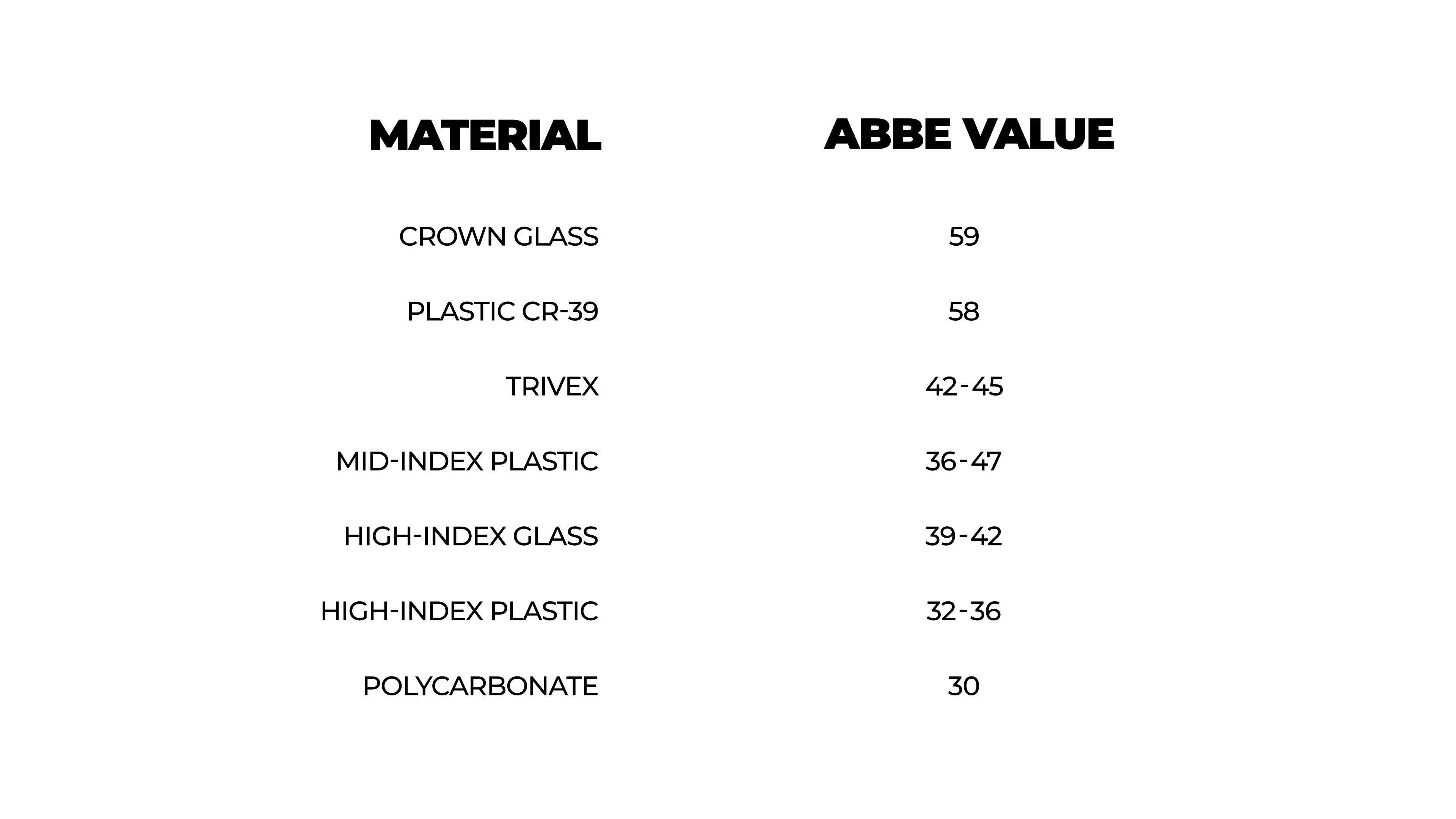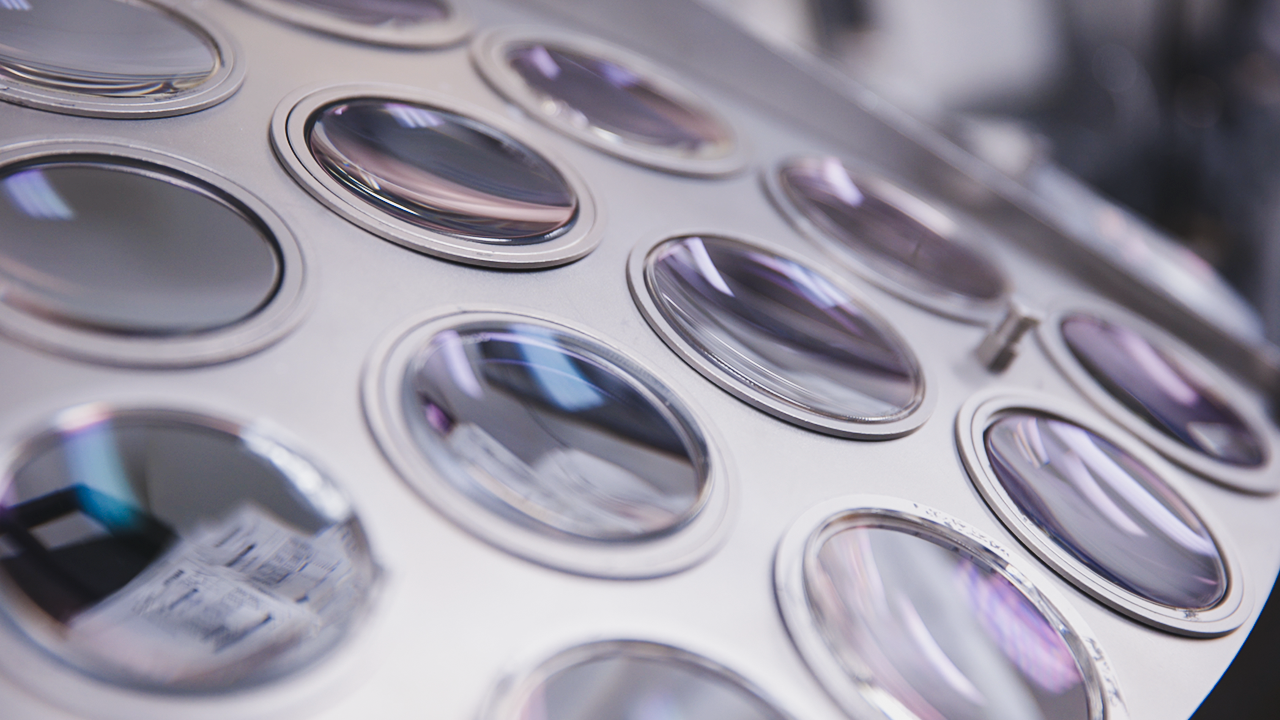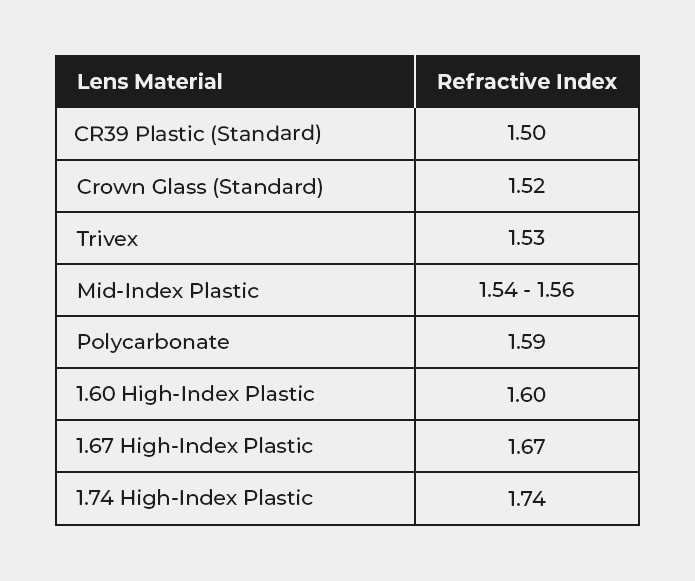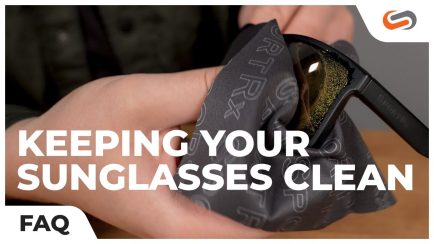Tired of being mistaken for a mad scientist because of your strong eyewear prescription? If you’re worried that your high prescription limits you to wearing thick and unfashionable lenses, we’ve got just the solution. High index lenses may be a great alternative for you and your lifestyle (scientist or not). Join SportRx as we break down the pros and cons of high index lenses.
Table of Contents
1. Watch the Video
2. What are High Index Lenses?
a. What is a Refractive Index?
b. What are High Index Lenses Made Of?
c. How are High Index Lenses Different from Regular Lenses?
3. Pros and Cons of High Index Lenses
a. Pros of High Index Lenses
b. Cons of High Index Lenses
4. Should You Get High Index Lenses?
5. Shop High Index Glasses and Sunglasses Online at SportRx
Watch the Video
Join Eyeglass Tyler as he breaks down the pros & cons of high index lenses. For more information, continue reading!
What are High Index Lenses?
Before we jump into the advantages and disadvantages of wearing high index lenses, we’ll go over how they are distinct from standard lenses. Typically, high index lenses are best for strong prescriptions that correct for nearsightedness (myopia), farsightedness (hyperopia), or astigmatism. The material used to create these lenses give it a higher refractive index than regular CR-39 (plastic) and glass lenses, allowing high index lenses to be made much thinner and lighter.
What is a refractive index?
Prescription eyewear corrects vision by bending light to land in the proper spot on your retina if your eyes can’t quite see clearly on their own. Lenses with a higher refractive index can bend light more efficiently than standard lenses. Regular lenses have an index of around 1.50, which most people find suitable if they have mild or moderate prescriptions. High-index lenses generally range from a refractive index of 1.59 to 1.74.
What are high index lenses made of?
High index lenses are made from a special type of plastic that bends light more effectively than standard plastic or glass lenses. Because of this special property, they can be sculpted with less material than regular lenses of the same prescription.
Take a look at the refractive indexes of common eyewear lens materials compared to high index plastics. The higher the lens' refractive index, the less material it requires, and the thinner it can be.
How are High Index Lenses Different from Regular Lenses?
High index lenses are designed to be thinner than regular lenses, particularly at the edges. This allows people with stronger prescriptions to choose from a wider range of eyeglass or sunglass frames than are available for thicker lenses.
Standard lenses that correct nearsightedness are usually thicker at the edges, making it difficult for certain frame designs to support stronger prescriptions. These may even make your eyes appear smaller to other people. By contrast, lenses with strong farsighted prescriptions are thicker in the center and give your eyes a magnified appearance. If you prefer having more frame options to choose from, or the bug-eyed aesthetic doesn’t quite match your style, high index lenses may be the accessory upgrade you’ve been looking for.
Pros and Cons of High Index Lenses
Still not sure if you need high index lenses? Follow along to see what other advantages and disadvantages to consider when shopping for high prescription eyewear.
Pros of High Index Lenses
- They are thinner, lighter, and more convenient. Your eyewear won’t slide down your nose as easily, and you won’t need to keep pushing them back up every so often. The temples won’t feel as heavy on the ears, and will be more comfortable for a longer span of time.
- You can avoid the “coke bottle” appearance. The less exaggerated lenses won’t affect how big or small your eyes look to other people. No more spooking innocent bystanders!
- They are aesthetically versatile, as most high index lenses are available with a wide range of customization options, including:
- Choosing from single-vision or progressive lenses
- Ability to add Transitions technology
- Ability to add a wide number of specialized coatings
- *Other high index lenses may be more limited in what features you can add, so be sure to contact one of our Sports Opticians to see what we have to offer!
Cons of High Index Lenses
- They are more fragile. High index lenses may pose a safety hazard, and are not suitable for rough or active use. They’re more brittle than standard lenses and not as impact-resistant as polycarbonate or trivex lens materials. They're not suitable for rimless or semi-rimless frame designs, since they're more likely to chip or crack without the support of a full frame. Because they are more brittle than normal lenses, they are not recommended for children or for playing sports.
- They are less scratch-resistant in nature. High index material is more prone to scratches, and should be handled with more care than regular lenses. We recommend adding a top-tier scratch anti-scratch coating to preserve the clarity of your high index eyewear.
- They are more reflective than standard lenses. Because high index lenses are typically flatter than regular lenses, they tend to reflect light more easily. Although it will cost extra, we recommend adding an anti-reflective coating if you’ll be wearing glasses in brightly lit areas, whether for indoor or outdoor settings. For sunglasses, a backside anti-reflective coating helps with reducing reflection.
- They are more prone to peripheral distortion. High index lenses have a relatively lower Abbe value (a unit of measurement for optical clarity) than other materials. This means that the outer edges of your lenses will look more distorted than other standard lenses of the same prescription. Polycarbonate, as shown in the chart below, is an exception.

- Finally, they are pricier than standard lenses. In addition to any coatings you choose to apply to your lenses, specially cut high index lenses are made from a different material and require a different process than standard lenses. This comes at an extra cost, but it’s good to remember that you get the value you pay for.
Should you get High Index Lenses?
Choosing the right lenses all depends on your unique prescription and lifestyle. Those with lighter prescriptions will not notice much of a difference between high index lenses and standard lenses, so the upgrade is not usually worth it if you don’t have a strong prescription. But if you do, you’ll appreciate the thinness you get with high index lenses, and find that their unique properties outweigh their limitations, despite the extra cost.
Our SportRx Opticians are more than happy to help you decide if high index lenses are right for you. For an in-depth look at thickness comparison between multiple lens materials, including high index options, check out our video on the common lens materials available for prescription eyewear.
Shop High Index Glasses and Sunglasses Online at SportRx
Decided that you need high index eyewear in your life? SportRx has you covered. When you shop with us, you’ll find video guides and tool tips throughout the build process as you customize the perfect pair of high index glasses or sunglasses. An answer to all your questions is at your fingertips, and if you want to chat with an expert, contact us. We’ll put you in touch with one of our friendly in-house opticians who can help you build your high index prescription eyewear and get a perfect fit.
Ditch risky online shopping with our See Better Guarantee™. Try your high index eyewear for 45 days and if you’re not 100% satisfied, send them back. Get a full refund, exchange, or credit towards a better pair. And return shipping? Covered. Get the best high index prescription glasses and sunglasses online at SportRx today!






